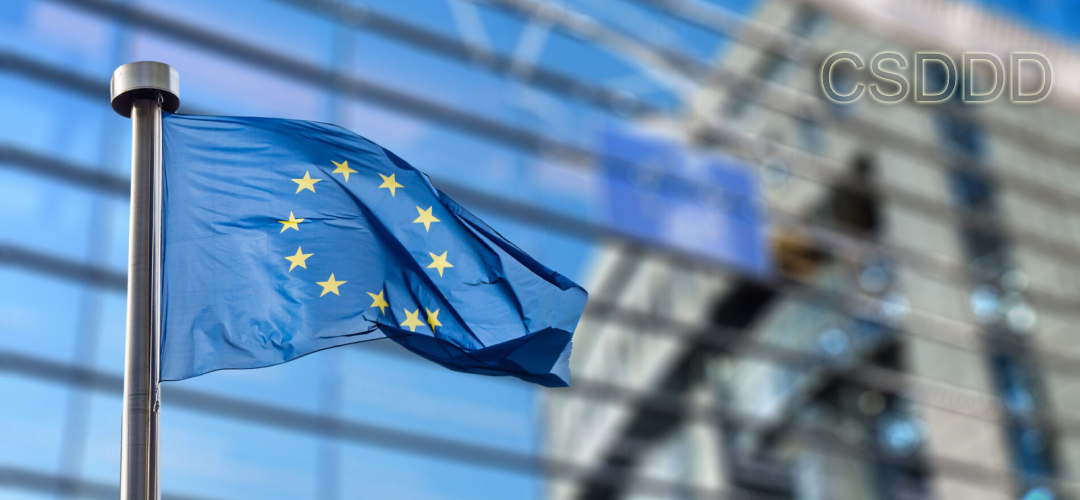Facing a Pushback
March 30, 2024 | Expert Insights

The European Union (EU) has recently enacted a landmark piece of legislation—the Corporate Sustainability Due Diligence Directive (CS3D). This directive aims to hold large companies accountable for the environmental and human rights impacts throughout their supply chains. After months of negotiations and revisions, the EU Council finally reached a consensus on the CS3D on 15 March 2024.
However, the directive has also triggered concerns from all corners of the corporate world; some companies fear a surge in bureaucracy and administrative burdens. Therefore, it was not surprising that the final text was a heavily watered-down version of the original proposals. It covers fewer companies and activities and provides for a longer phasing-in than was originally projected.
Background
The need for the CS3D arose from a growing recognition that businesses often operate in complex global supply chains, where human rights abuses and environmental damage can occur far from their headquarters. Consumers and activists have increasingly demanded that companies take responsibility for the entire lifecycle of their products, from raw material extraction to final disposal. The EU, a leader in promoting sustainability standards, responded with the CS3D to ensure businesses operating within its borders are held accountable for their actions.
CS3D mandates a comprehensive due diligence process for large companies within the European Union. This process centres on identifying, mitigating, and preventing negative human rights and environmental impacts across their entire supply chains.
Firstly, companies are required to integrate due diligence into the very fabric of their operations. This involves revising corporate policies and management systems to prioritize responsible sourcing and sustainable practices. This could encompass setting measurable targets for environmental impact reduction or establishing ethical sourcing guidelines. Only companies that meet the threshold of having more than 1,000 employees and a global turnover exceeding €450 million will be required to make these changes.
Secondly, the CS3D demands a proactive approach to risk assessment. These large companies must map their supply chains, both upstream and downstream, to pinpoint potential areas of concern. This might involve scrutinizing labour practices in raw material extraction sites or evaluating the environmental footprint of manufacturing partners. Identifying these potential risks allows companies to prioritize areas for intervention.
Thirdly, the directive necessitates concrete actions to address identified risks. Companies may implement supplier codes of conduct that outline expected labour practices and environmental standards. Regular audits can verify compliance with these codes. Additionally, companies might invest in initiatives that promote sustainable practices throughout their value chains, such as financing renewable energy projects or partnering with suppliers to implement cleaner production methods.
Fourthly, the CS3D emphasizes the importance of establishing grievance mechanisms. These mechanisms provide a platform for stakeholders, including employees, local communities, and NGOs, to report potential human rights or environmental abuses within the supply chain. A functional grievance mechanism allows for early identification and rectification of issues, fostering transparency and accountability.
Companies exceeding the €450 million turnover and 1,000 employee thresholds are required to assess the effectiveness of their due diligence measures and report on their progress in mitigating negative impacts. This transparency allows stakeholders to hold companies accountable and provides valuable data for continuous improvement.

Analysis
The corporate world's reception of the CS3D has been far from uniform. Businesses with a head start in sustainability practices see the directive as a positive force. It compels competitors to raise their game, fostering a more level playing field and ultimately promoting responsible sourcing throughout global supply chains. This aligns with their existing efforts and could even enhance their brand reputation.
Implementing the directive's requirements will necessitate significant investments in resources and personnel, potentially impacting profitability. The initial, wider scope of the directive, encompassing smaller companies, further amplified these anxieties. The eventual scaling back likely soothed some corporate concerns, but challenges remain.
The road to the successful implementation of the CS3D is paved with hurdles. The sheer complexity of modern global supply chains presents a formidable obstacle. Mapping and monitoring these intricate networks to pinpoint potential human rights and environmental risks can be daunting. This challenge is particularly acute for smaller companies indirectly impacted by the directive, who may need more resources or expertise to navigate the complexities of their extended supply chains.
Another potential roadblock is the directive's need for complete standardization. While it lays out a clear framework, it also affords companies some flexibility in approaching due diligence. This flexibility, intended to accommodate diverse business models, could lead to inconsistencies in implementation and enforcement across different EU member states. Companies operating in multiple jurisdictions might face a patchwork of regulations, adding further complexity.
The directive places a significant capacity-building burden on smaller companies within the supply chain. These companies may lack the internal expertise or resources to comply with the requirements imposed on them by larger companies subject to the directive. To ensure smooth implementation and avoid disruptions within the supply chain, there's a need for targeted support programs to help smaller companies build the capacity to meet the new standards. This could involve training programs, access to technical resources, or financial assistance to defray compliance costs. By addressing these challenges, the EU can pave the way for more effective and impactful implementation of the CS3D.
Assessment
- The EU's CS3D is a significant step towards ethical business practices. Although its scope was reduced, it mandates large companies to address human rights and environmental issues within their supply chains.
- Effective implementation is crucial. EU member states need to provide clear guidance and support, especially for smaller companies indirectly affected. This could involve capacity-building programs to help them comply with the requirements imposed by larger companies.
- Despite the challenges, the CS3D can potentially transform global supply chains. Encouraging companies to adopt sustainable practices can lead to a more responsible and environmentally conscious business ecosystem.








Comments